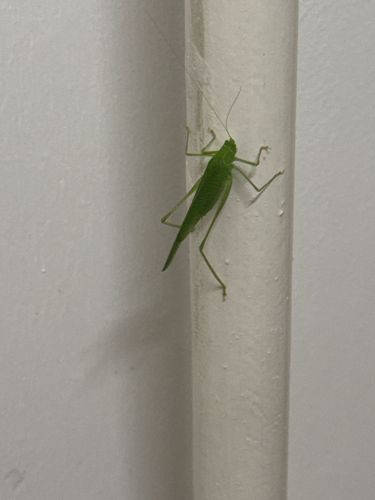Katydid
Scientific Name: Tettigoniidae
Order & Family: Orthoptera, Tettigoniidae
Size: Typically range from 2 to 10 cm (0.8 to 4 inches) in length, though some tropical species can be much larger.

Natural Habitat
Found in various habitats, including forests, grasslands, gardens, and shrublands, often camouflaged among foliage.
Diet & Feeding
Most katydids are herbivorous, feeding on leaves, flowers, and seeds. Some species are omnivorous, consuming other small insects, insect eggs, or carrion alongside plant matter. A few are predatory.
Behavior Patterns
Katydids are primarily nocturnal, becoming active and vocal after dusk. Males produce characteristic chirping or buzzing sounds by rubbing their wings together (stridulation) to attract mates. They are excellent at camouflage, blending in with their surroundings due to their green or brown coloration and leaf-like body shapes. They can jump and some species can fly.
Risks & Benefits
Generally harmless to humans. They can occasionally cause minor damage to garden plants in large numbers. Ecologically, they serve as a food source for birds, bats, and other predators, and some help in pollination or seed dispersal.
Identified on: 9/4/2025